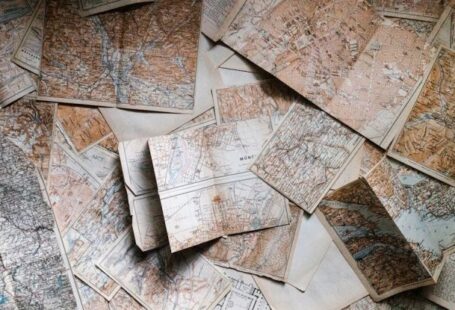Navigating the vast expanse of the open seas has been a challenge for mariners for centuries. While modern technology has introduced advanced navigation systems, nautical charts remain an essential tool for mariners to safely navigate through the waters. Let’s delve into how modern mariners utilize nautical charts for navigation.
The Evolution of Nautical Charts
Nautical charts have come a long way from the hand-drawn maps used by ancient sailors. Today, mariners have access to highly accurate and detailed nautical charts that are created using sophisticated surveying techniques and satellite technology. These charts provide crucial information about water depths, underwater obstructions, shorelines, buoys, and other navigational aids that help mariners plot their course and avoid hazards.
Understanding Chart Symbols and Abbreviations
One of the key aspects of using nautical charts effectively is understanding the various symbols and abbreviations used on the charts. These symbols represent different features such as rocks, shoals, wrecks, and navigational markers. By decoding these symbols, mariners can interpret the information provided on the charts and make informed decisions about their route.
Plotting a Course
When planning a voyage, mariners start by studying the nautical charts of the area they will be navigating. They identify key landmarks, navigational aids, and potential hazards along their route. Using tools such as parallel rulers and dividers, mariners plot a course on the nautical chart, taking into account factors such as current, wind, and tidal conditions. This meticulous planning ensures that the vessel follows a safe and efficient path to its destination.
Navigating with GPS and Electronic Chart Plotters
While traditional paper charts are still widely used, many modern mariners also rely on electronic chart plotters and GPS systems for navigation. Electronic chart plotters display digital versions of nautical charts and allow mariners to track their position in real-time. GPS systems provide accurate positioning data, making it easier for mariners to stay on course and navigate with precision. However, it is essential for mariners to cross-reference electronic charts with paper charts to ensure redundancy and mitigate the risk of technical failures.
Using Nautical Publications for Supplemental Information
In addition to nautical charts, mariners also consult various publications such as sailing directions, tide tables, and pilot books to gather supplemental information about the areas they will be navigating. These publications provide valuable insights into local navigational challenges, recommended routes, and emergency procedures. By combining information from nautical charts and publications, mariners can enhance their understanding of the maritime environment and make informed decisions while at sea.
Adapting to Changing Conditions
Navigating with nautical charts requires a constant awareness of changing conditions such as weather patterns, tides, and currents. Mariners must regularly update their charts with the latest information to account for changes in the marine environment. By staying vigilant and adapting to evolving conditions, mariners can navigate safely and effectively, even in challenging situations.
Conclusion: Mastering the Art of Navigation
In conclusion, nautical charts remain an indispensable tool for modern mariners navigating the world’s oceans. By understanding chart symbols, plotting courses, utilizing electronic chart plotters, and staying informed with nautical publications, mariners can master the art of navigation and safely traverse the seas. With a combination of traditional navigation techniques and cutting-edge technology, mariners can navigate with confidence and precision, ensuring safe passage to their destinations.





